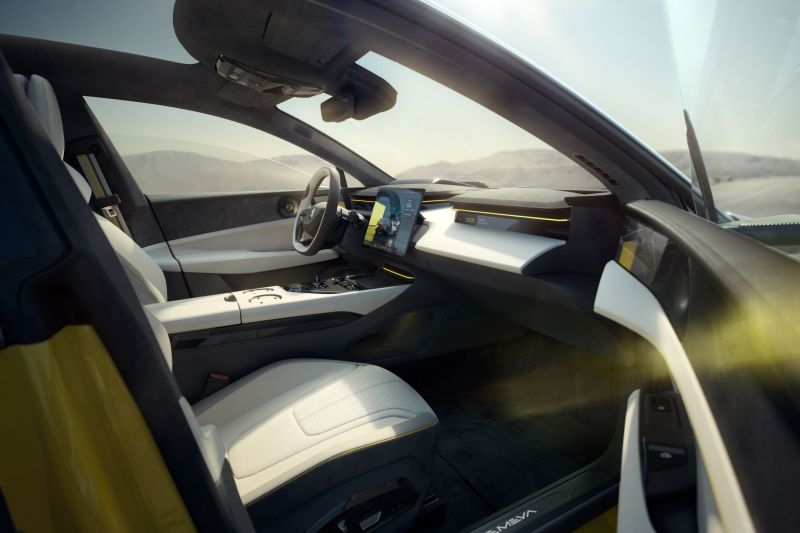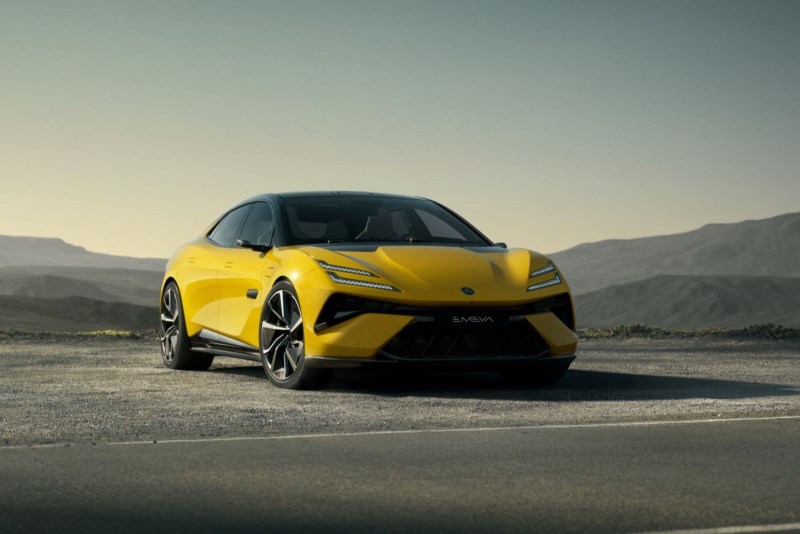The 2023 Lotus Emira was the last gas-powered car made by Lotus Cars. By discontinuing the production of internal combustible engine cars, Lotus
Its first electric vehicle on the market was the Lotus Eletre — this Lotus car was an electric hyper SUV with up to 905 horsepower. After the Lotus Eletre gets a foothold on the market, Lotus plans to release its second EV model in 2024 dubbed the Lotus Emeya. What’s interesting about it?
The Lotus Emeya is powered by the same dual motors used in the Eletre model to produce up to 905 horsepower and 726 lb-ft of torque. It will also have a base trim similar to the Eletre model that can produce 603 horsepower and 523 lb-ft of torque. It even resembles the Eletre, but it’s more of a four-door hatchback than an SUV. Besides that, the Lotus Emeya is slightly faster — it can sprint from 0 to 60 mph in 2.78 seconds.
Another cool thing about the Lotus Emeya is that it comes with 800-volt battery technology that can add a range of 250 miles in about 20 minutes at a DC fast charger. However, Lotus Cars hasn’t disclosed its exact battery range, but we expect it to match up to the Eletre model, which is available with a range of 260 miles and 315 miles.

More features to get excited about
Inside, the Emeya is designed just like the Eletre with high-quality materials and finishing from the dashboard, steering wheel, and center console to the seats. Almost everything in the car is controlled from a 15.1-inch OLED touchscreen next to the driver’s seat. There is also an OLED strip behind the steering wheel to monitor your speed, battery health, and other crucial information while you’re driving. Better yet, you can project information onto the windshield using the HUD (head-up display) without taking your eyes off the road.
If you’re an audiophile, you will enjoy the KEF sound system with 23 speakers inside the Lotus Emeya, which delivers an immersive experience. The intelligent glass roof and configurable ambient lighting are also nice touch that makes the interior feel more luxurious.
Lotus Cars hasn’t revealed the starting price of the 2025 Emeya electric grand-tourer, but it’s likely to start at around $110,000 like the Eletre SUV. If you want an electric car that is almost as fast as the Porsche Taycan Turbo S, the Lotus Emeya is a good option. Lotus is also working on a 2,000-horsepower electric hypercar dubbed the Lotus Evija that will be one of the fastest electric
Lotus is finally back on the radar like it never left!




